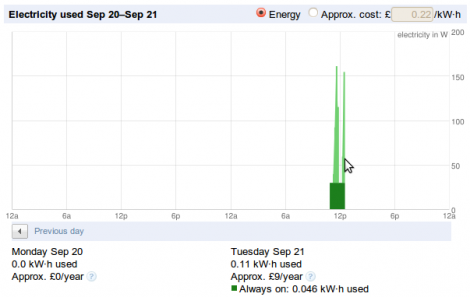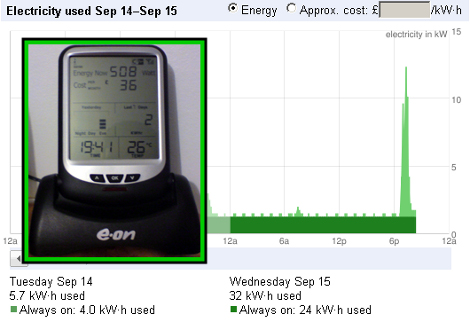
[Dodgy] wrote in to talk about his power meter data harvesting programs. This uses the same hardware by CurrentCost as the hack we looked at over the weekend but [Dodgy’s] implementation is different. It’s separated into two parts, the first is a webserver written in C that harvests the data and makes it available at an address on the network, the second is written in Perl to format and upload data to Google PowerMeter.
The C program serves data on a configurable port, defaulting to 3090. All of the data can be accessed in one line of code by loading http://127.0.0.1:3090, or individually with subdirectories like /watts, /time, or /tempr. From there you can do what you want with the data. The second part of [Dodgy’s] suite is a Perl script that polls the C server and sends the data to your Google account.
One thing that interests us is his comment that you should be able to compile the server side C code for an embedded device. It would be a nice energy savings to be able to upload data regularly without a PC running constantly.










